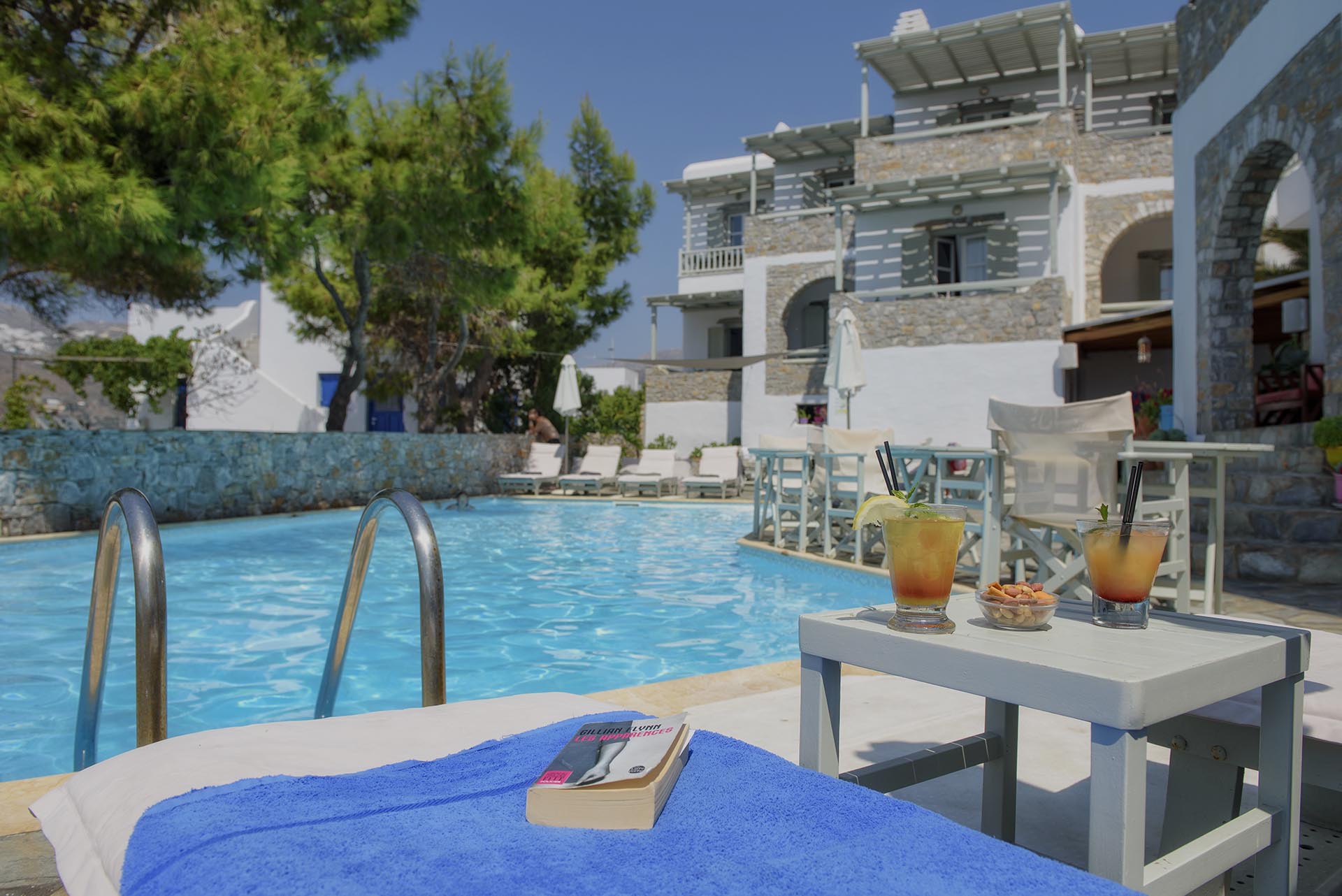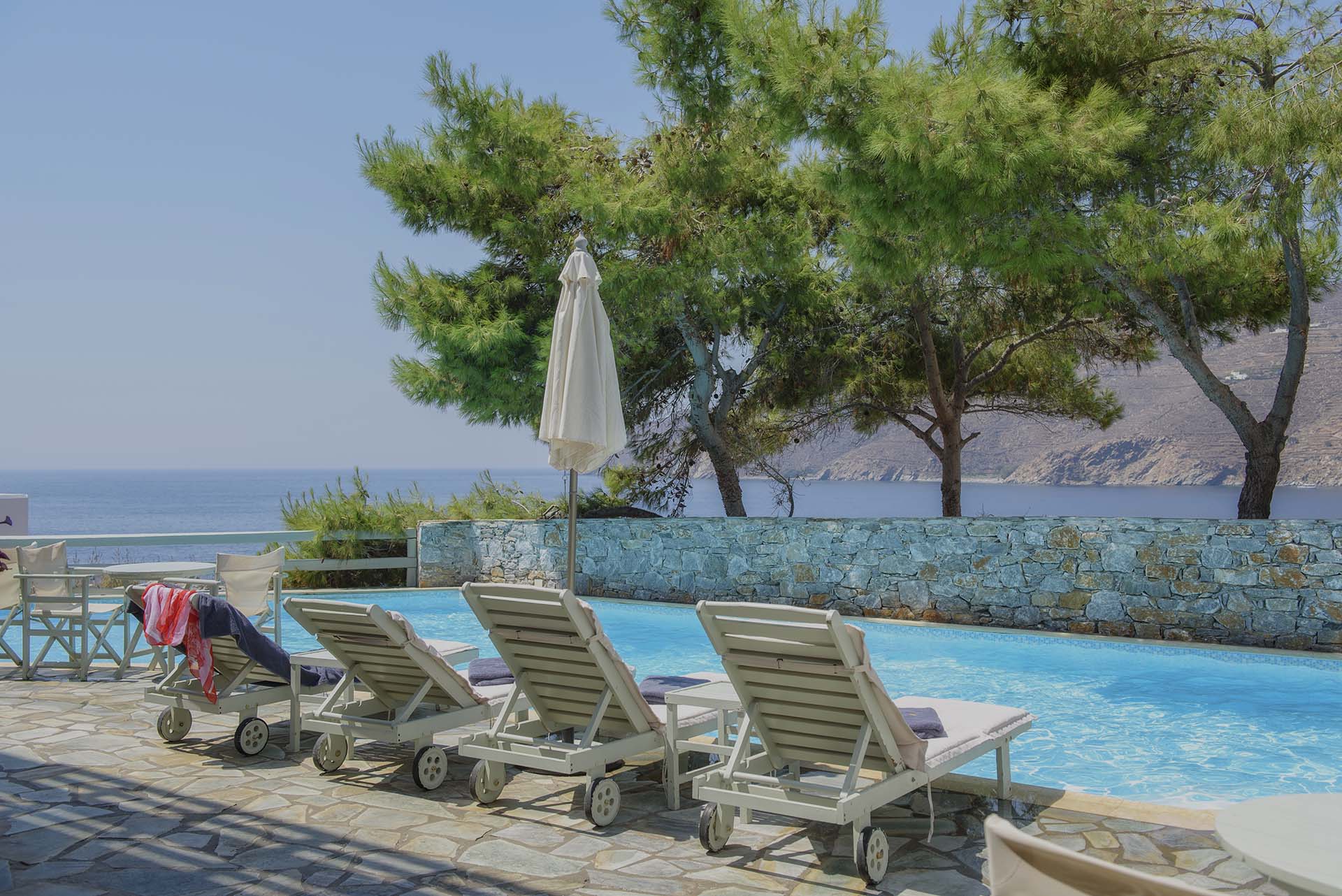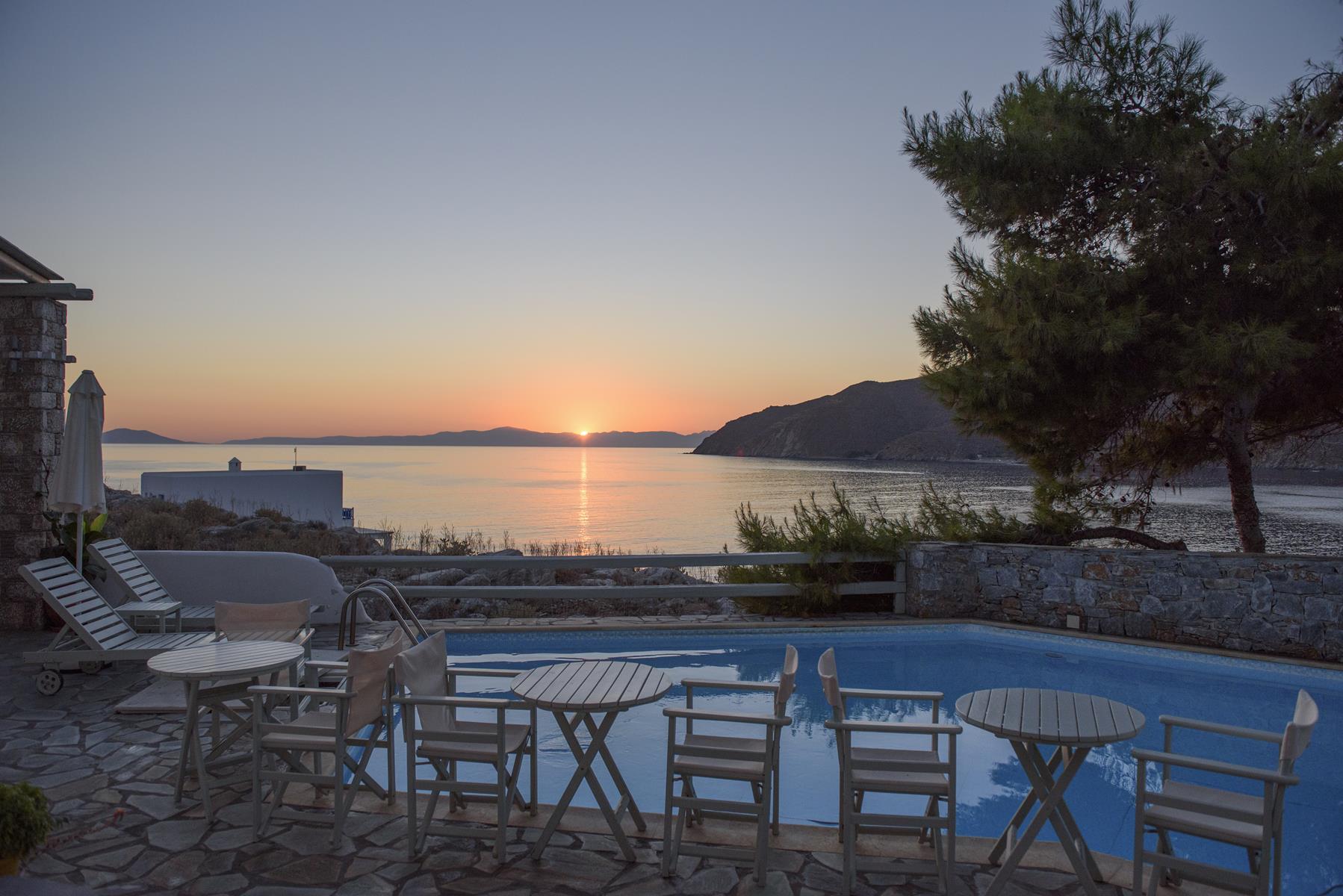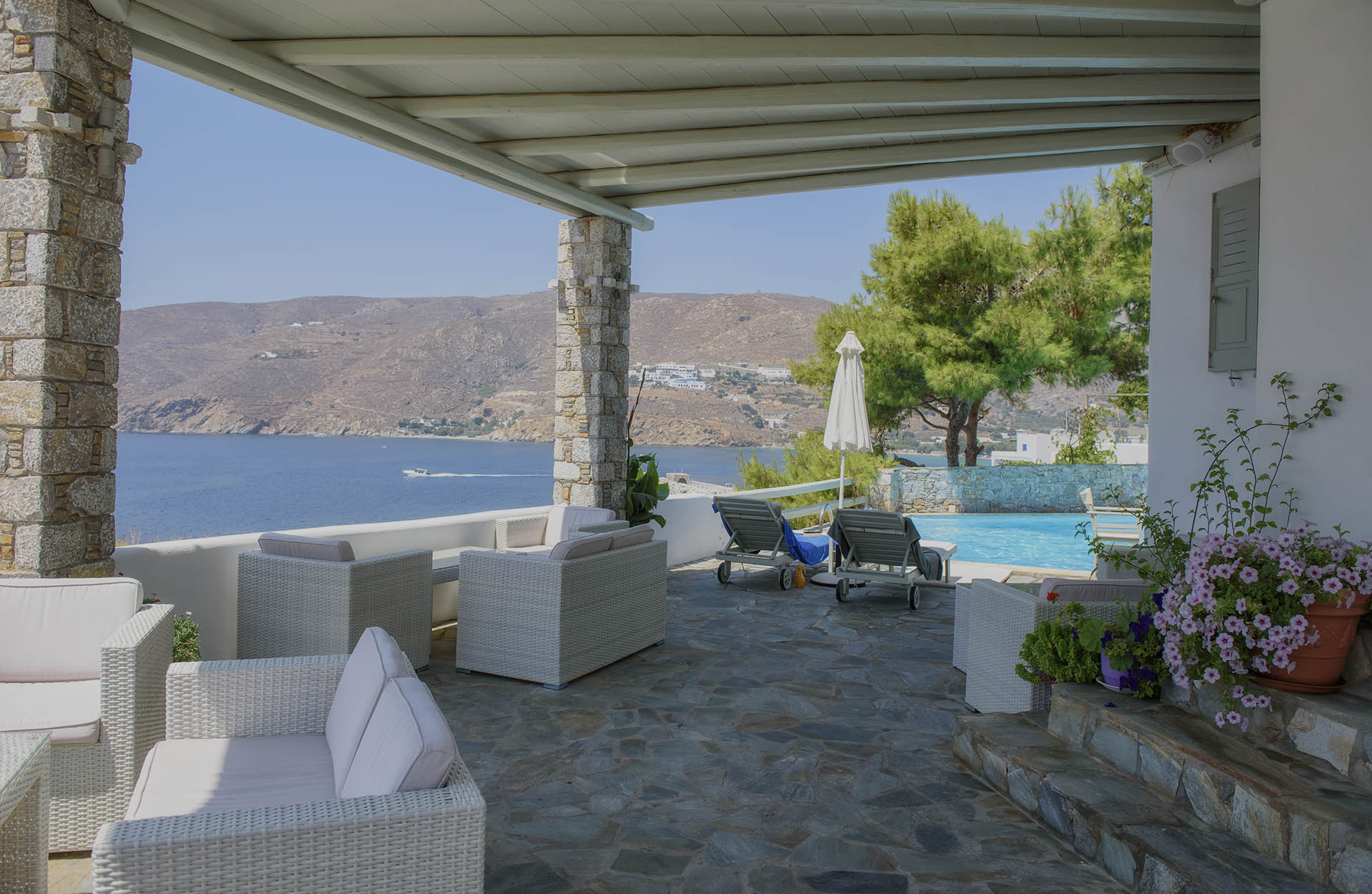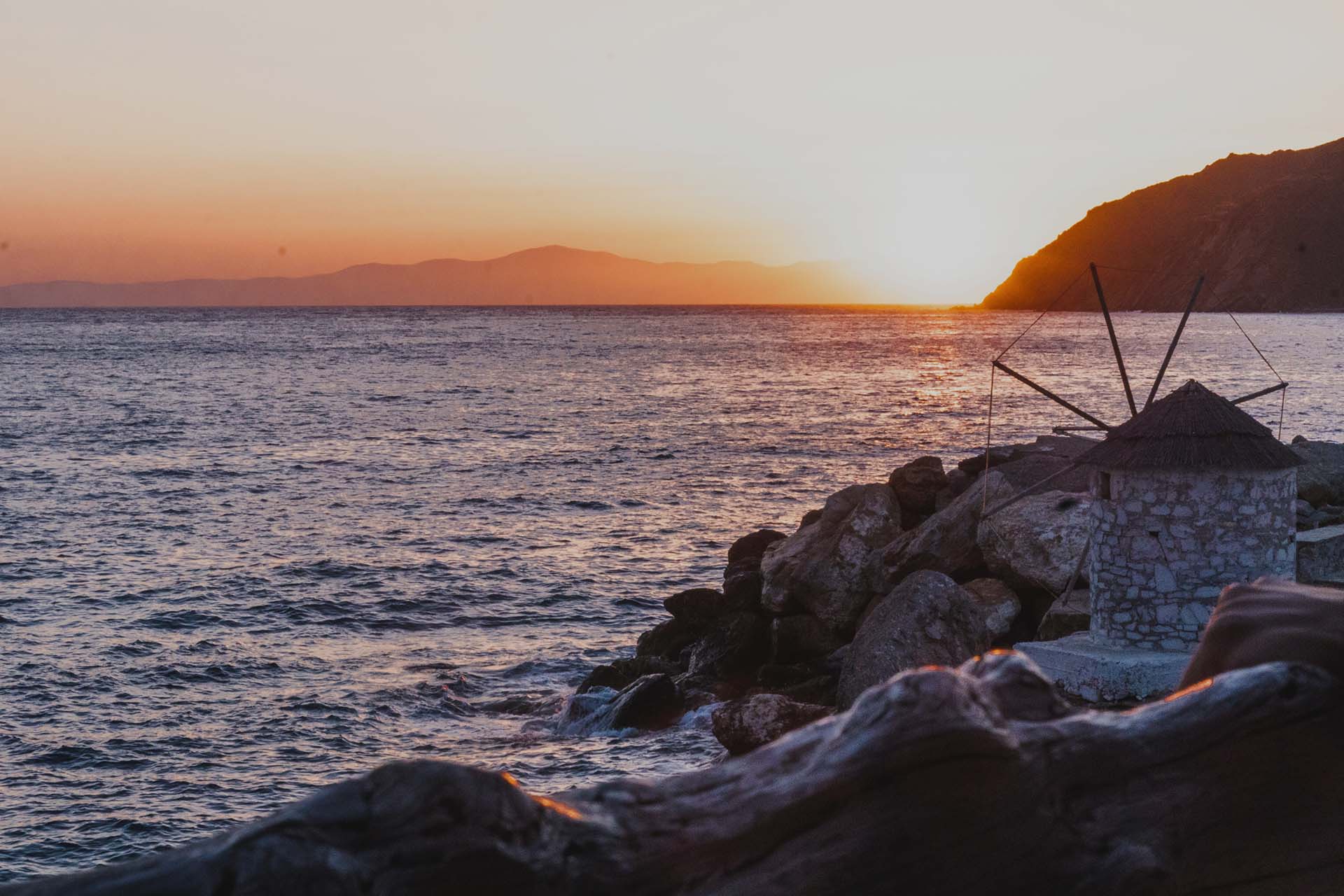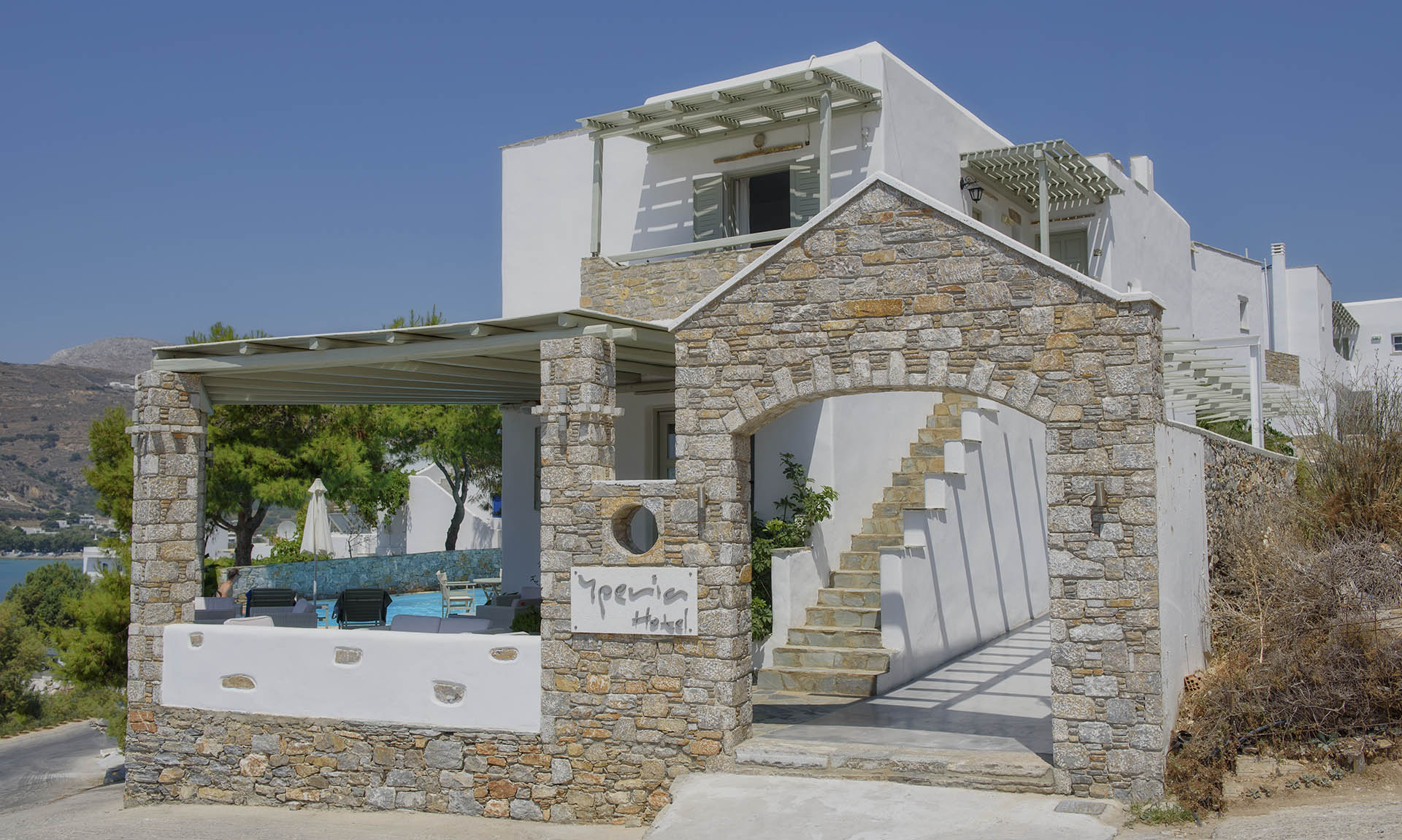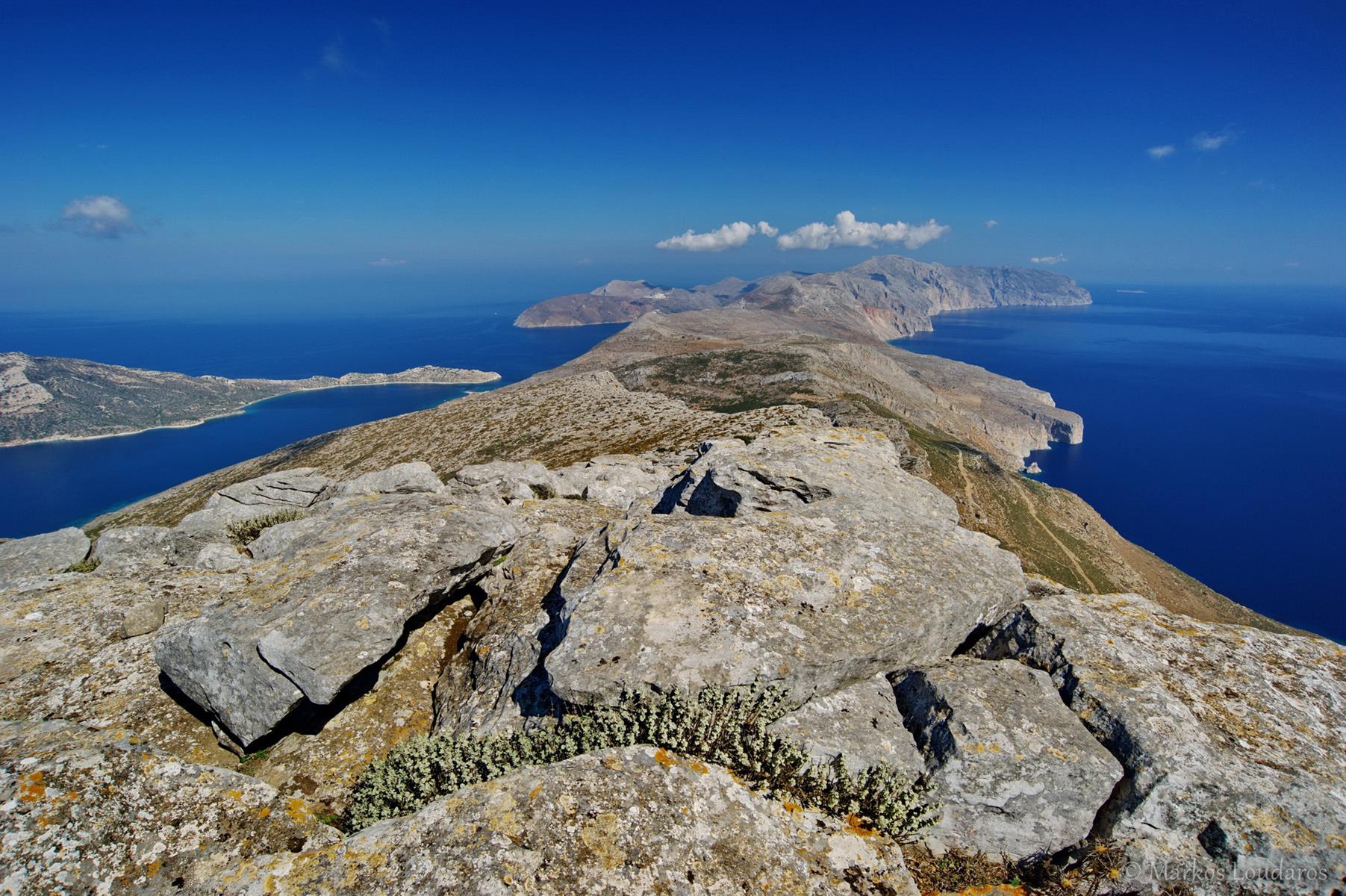means fresh air, sun, smell from the herbs and an endless view of the bright blue Aegean Sea. You can have this view from almost every single point of your route. Things to be taken into consideration; it was not until the mid 1990s that the first proper roads were constructed. These are; a) From Chora to Arkesini southwards and b) from Chora to Aegiali northwards. Before then, the car as a means of transport was of little importance. Donkeys used to be the essential means of transport by land and therefore, a well-designed “system” of cobbled paths used to cross the island and guarantee the transportation of goods to the villages.
Despite the fact that nowadays the car has already “invaded” the island, Amorgos remains peaceful and quiet. The traditional paths have mostly been preserved, providing us with amazing opportunities of exploring the island. Even today, it is possible to meet donkeys carrying heavy loads of fresh goat milk from the fields to the villages.
It is at this specific moment that time seems to have stopped for a while and an idea of how hard life in Amorgos used to be can be gained. With an altitude of nearly 850 meters, Amorgos offers a variety of different possibilities of exploration. Considering that all this hypsometrical scale is actually completed within a short distance starting from the shore, it is easily understood that certain requirements must be met by anyone attempting such a tour. On the ridges the sun is really merciless.
On the high peaks, the whole area can be covered by dense fog within a few minutes, while strong winds usually blow. These hard conditions should not be underestimated in any case. Drinkable water, suitable shoes and a special jacket are necessary. Even in the marked routes, suitable shoes should be worn and drinkable water should be brought along.


